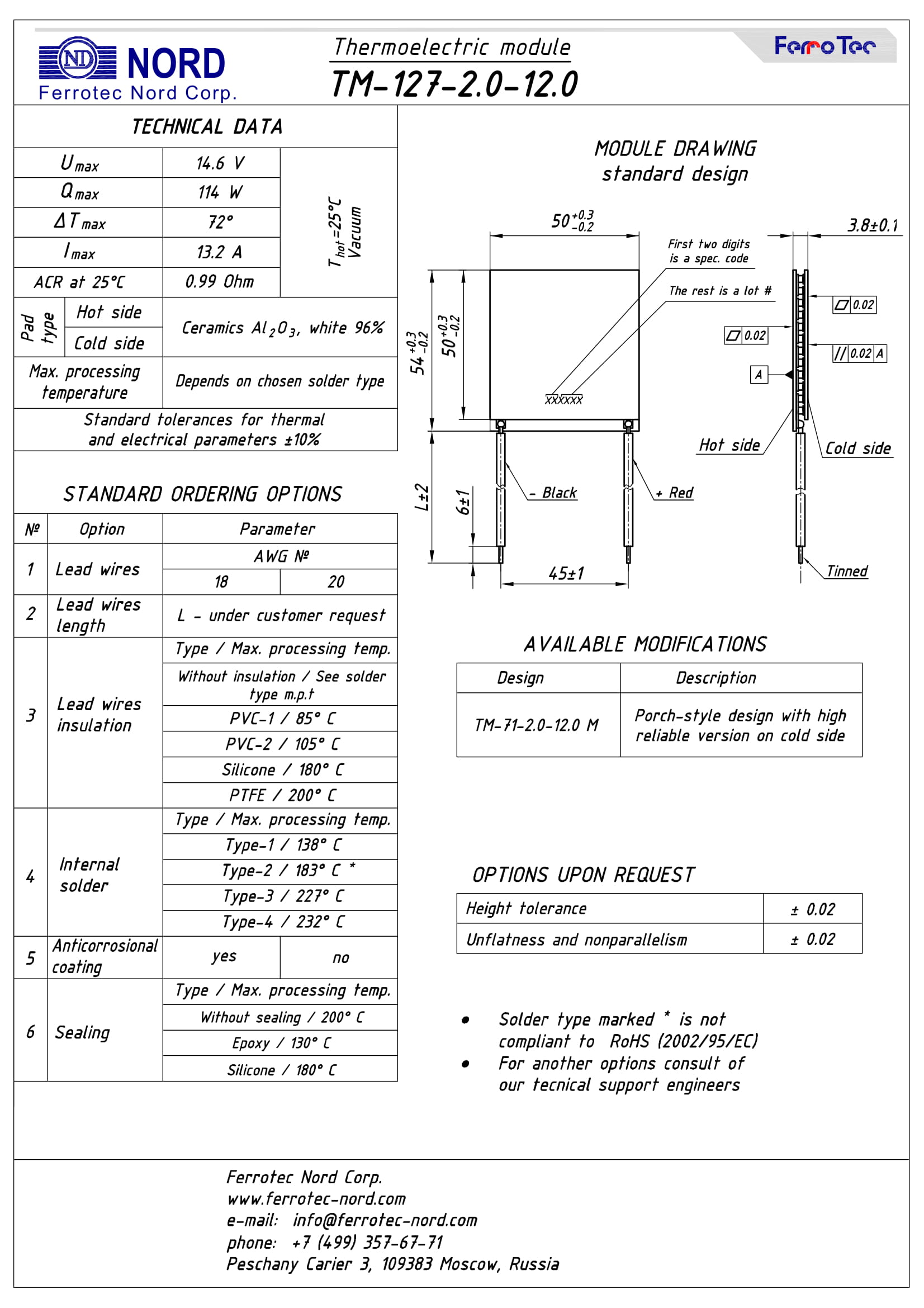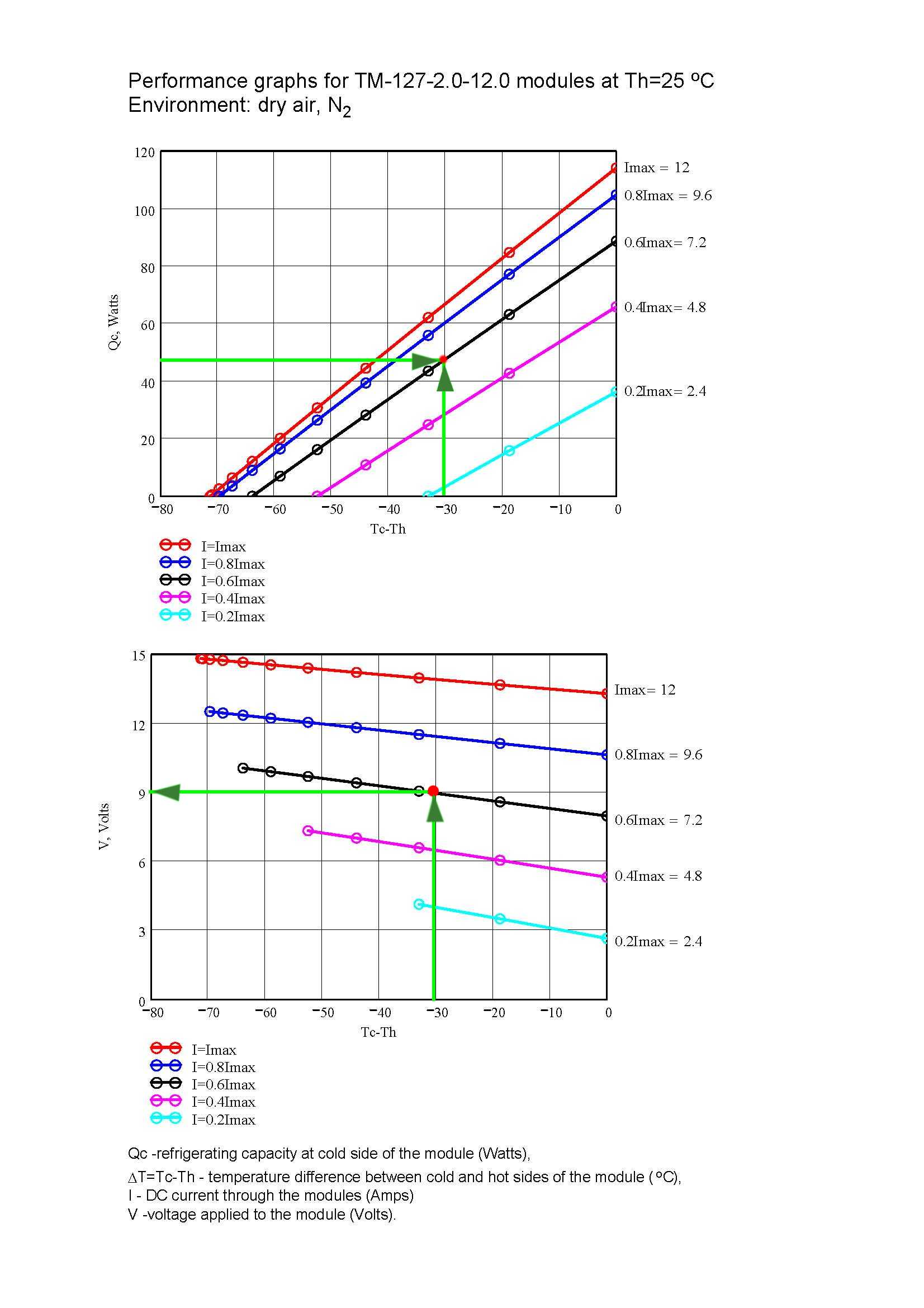In most of applications, Peltier coolers are used to cool the object to the required temperature and maintain this temperature at the desired level. In other words, thermoelectric modules are supposed to ensure the certain difference between the ambient temperature and the cooled object temperature through heat removal from the object to the heat sink.
Temperature difference Δ T is defined as a difference between the temperature of thermoelectric module hot side, used for heat removal from the module, and that of the module cold surface which ensures cooling the object down to the preset temperature.
When choosing a module, it should be remembered that full thermal load Qc comprises the capacity needed to cool the object and other types of additional heat inflows from the environment owing to convection, heat emission and heat conductivity of the elements installed in the device.
Thermoelectric modules are able to operate in two limit modes:
- Qmax maximum cooling capacity mode (heat pump) at ΔT = 0;
- ΔTmax maximum object cooling mode, at Qc = 0.
In practice, however, only the combined operation mode is applied.
ΔTmax and Qcmax are the basic thermal characteristics of the module.
1. Analysis of a module’s load curve may help to select a suitable Peltier module and optimize its operation mode.
Baseline data for thermoelectric cooler selection:
- cooling capacity to be ensured by the module, Qc, W;
- temperature difference between the module hot and cold sides Thot — Tcold = ΔT, °C.
The module’s maximum cooling capacity required to ensure the preset temperature difference is defined with the following temperature:
![]()
where:
Qmax is module’s maximum cooling capacity;
ΔTmax is module’s maximum temperature difference (72 °C for single-stage modules).
Using the tables of thermoelectric module performance data, choose a Peltier module with the maximum cooling capacity equal or superior to the calculated maximum cooling capacity, considering the desired dimensions, supply voltage and current.
Click download corresponding to the chosen module type for its characteristics to be displayed.
Using the Qc vs temperature difference Thot — Tcold curves, determine the module’s operating current. Determine the chosen module’s supply voltage by the value of operating current I and required temperature difference ΔT.
Example:
It is necessary to ensure temperature difference ΔT = 30 °C at module cooling capacity Qc = 45 W and module hot side temperature Thot = 25 °C. Determine the maximum cooling capacity of the suitable module:
![]()
If the necessary temperature difference is up to 67 °C , a single-stage module is chosen.
From the single-stage module table, choose the ТМ-127-2.0-12.0 module with a close Qcmax value.
Click download for the module’s characteristics to be displayed.


Using the required temperature difference (30 °С) and required power (45 W) values, define the module’s operating current: 0.6 Imax = 12 × 0.6=7.2 A.
Using the temperature difference (30 °C) and operating current (7.2 А) values, define the module’s optimum supply voltage (9 V).
The displayed information also shows all the design and maximum permissible characteristics of the chosen thermoelectric cooler.
To choose a thermoelectric module complying with the customer’s requirements, advantage may be taken of the ТМ Calc software available on the website
